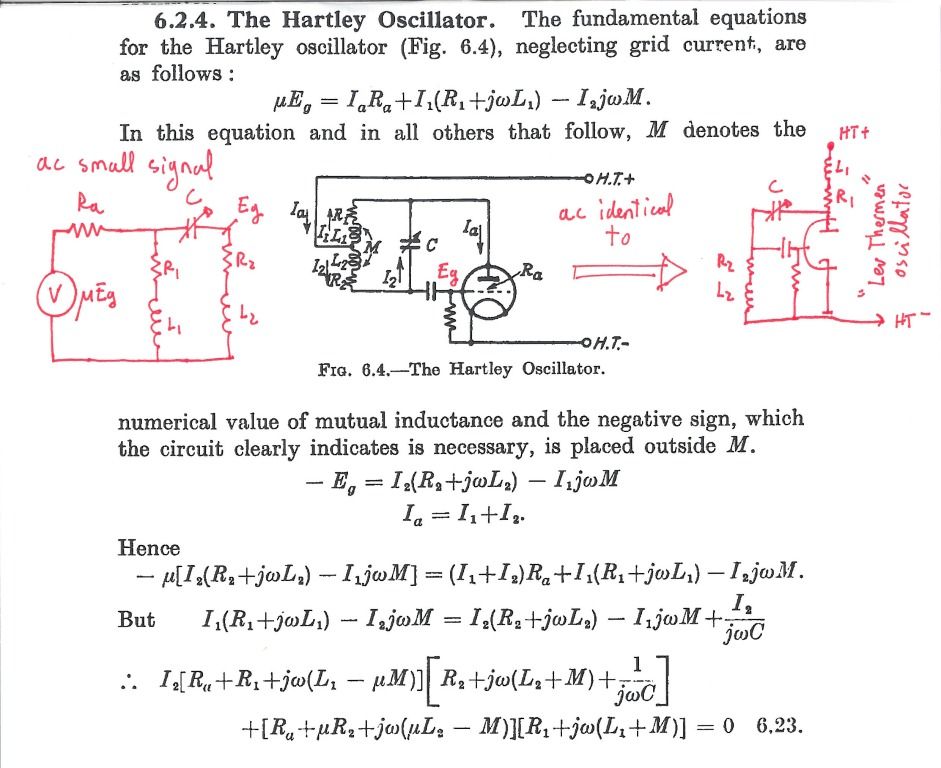"I do not know if this is of interest or it is just a little abstruse." - Juan
Thanks Juan - Of interest ? Yes... But get much more mathematical and I will be completely at sea! .... However, I know there are many who will read your calculations as easily as I read your schematics.
To me, this is the beauty of posting stuff on popular forums like TW - If what you post is "worthy" then someone (now, or at some future time) will benefit from your efforts.. If this (or these) person/s share what they develop fom what you have posted, then slowly we get doors opening - doors of understanding and innovation - directions we would not otherwise have gone..
"My intention is to apply the same small signal technique to the Thermen oscillator with the antenna series tank attached. Hopefully I'll get a formula for w=w(C-hand) in oscillation."
I didnt think it was possible to do this with the kind of "simple" calculations you are using above - (but dont take my word on this, I am a maths luddite - Honestly, I have not checked your calculations.. All I have checked is that there is nothing in them which seems utterly incomprehensible..;-) .. My understanding (and expierience attempting to calculate / simulate antenna LC interacting with tank LC) is that you need much more complexity - A pure mathematical formula for this is way beyond me - I tried useing successive aproximation, and now I use Dewsters spreadsheet which runs VB...
Lately, although its laborious, I have taken the capacitance results (antenna / hand) from a modified version of Dewsters spreadsheet (returning capacitance values for 5cm distance increments), and fed these results into my Proteus simulation.. then run a full circuit simulation using these values - These simulation "experiments" on the Lev oscillator looked good... But the physical reality was far less good.
One other thing.. I tried simulating a couple of your oscillators using Proteus (LISA/PROSPICE - an extended 3F5 engine) and got some strange results - can you advise of some parameters / values.. in particular, the inductors series resistance or anything else related to the inductors... I am getting much higher voltages than I expect to see.. and also convergence issues I dont expect.. I want to run the simulations in LT Spice next, but starting with what you have would be useful.
Fred.




